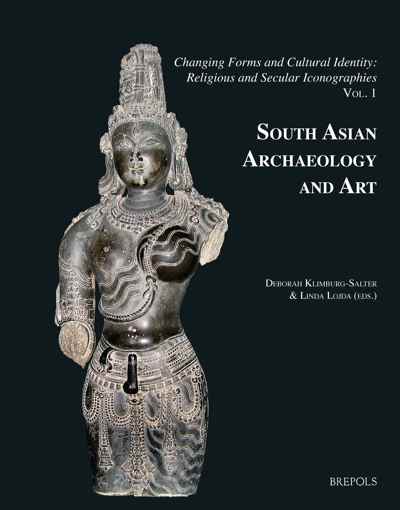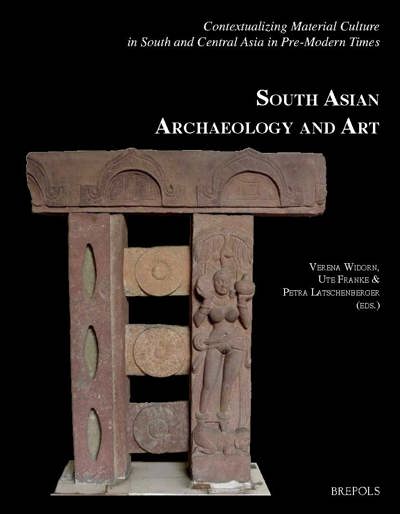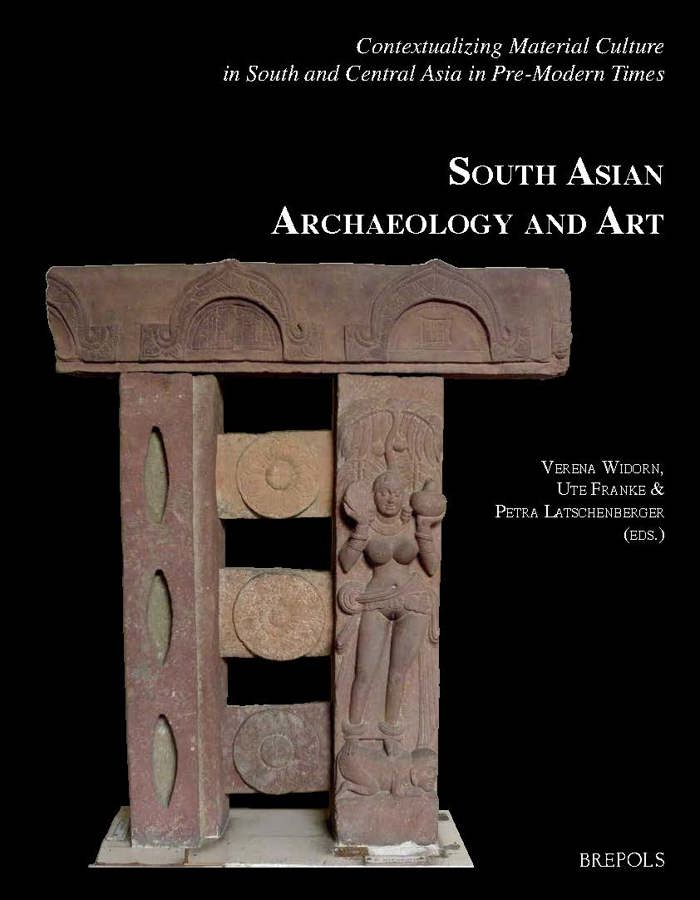
Contextualizing Material Culture in South and Central Asia in Pre-Modern Times
Papers from the 20th Conference of the European Association for South Asian Archaeology and Art held in Vienna from 4th to 9th July 2010
Verena Widorn, Ute Franke, Petra Latschenberger (eds)
- Pages: 377 p.
- Size:220 x 280 mm
- Illustrations:237 b/w
- Language(s):English
- Publication Year:2016
- € 150,00 EXCL. VAT RETAIL PRICE
- ISBN: 978-2-503-56642-9
- Paperback
- Available
The volume offers an interdisciplinary approach on the study of material culture in South and Central Asia from pre-historic times up to early modern age.
This publication reveals contemporary views on material culture in South and Central Asia from pre-historic times up to early modern age. Megaliths, seals, pottery, beads, coins, stone and copper inscriptions, sanctuaries, architectural remains and graveyards are physical evidences of important ancient cultures, such as the Indus Civilization or the Gupta dynasty, and are presented in this volume from different (inter)disciplinary perspectives and beyond political borders.
More than thirty papers written by experts from the field offer a wide chronological and geographical panorama as well as new interpretations of the archaeological finds and artefacts. The scope and variety of the content show the innovations in approach, method, technique and technology, collaboration and cross-linking of the disciplines of archaeology, art and architectural history, anthropology, philology and epigraphy. The topics, based on original scholarly research, fieldwork and archaeological excavations, provide thorough studies of the visual material in order to illuminate the human past and the cultural entanglements in South Asian pre-modern history.
The articles are richly illustrated with maps, tables and photographs from the scholars' own research trips to South, Central and North India as well as Pakistan and South Tajikistan.
The Editors, Preface
Aurore Didier, Anne Bouquillon, Yvan Coquinot, Anne-Solenn Le Hô, and François Mirambet, Polychrome Wares from Pakistani Makran, Mehrgarh/Nausharo (Pakistan) and Mundigak (Afghanistan) – First Results of the Archaeometric Studies
Rita P. Wright, Konar Sandal South, Nindowari, and Lakhan Jo Daro -Beyond the Limits of a Known World
Marta Ameri, Changing Patterns of lndo-Iranian Interaction in the Third and Second Millennia BCE as Seen from the Ahar-Banas Culture
Mary A. Davis, Stone Tools as Indicators of Socio-Economic Variability at Harappa, Pakistan
Randall Law, James H. Burton, John Fournelle, Hiromi Konishi and Huifang Xu, The Composition and Source of Lead-based Cosmetics from Harappa
Gregg M. Jamison, Seal Production in the Indus Civilization: a Comparative Analysis of Regional Carving Traditions
Jane R. McIntosh, Harappan Seals and Decipherment
Elke Rogersdotter, Expiry Date Exceeded? A Durability Test of 'Old' Artefacts, Illustrated with Game Utensils from the DK-C Area, Mohenjo-daro
Brad Chase, P. Ajithprasad, and Rajesh S. V., The Identification of Diversity: Material Culture and Social Practice in Harappan Gujarat
Piotr Eltsov, Vedic Literature and the Harappan Culture: Reconsidering the Dichotomy of Sacred and Profane
Federica Barba and Francesca Trapani, New Evidence on the Temples of Sirkap and Jaṇḍiāl C at Taxila
Muhammad Ashraf Khan and Mahmood-ul-Hasan, Archaeological Excavation at Jinan Wali Dheri, Taxila Valley, Pakistan – Archaeological, Stratigraphical and Chronological Investigations on the stūpa and the Monastery
Mahmood-ul-Hasan and Muhammad Ashraf Khan, Archaeological Excavation at Jinan Wali Dheri, Taxila Valley, Pakistan, Part II – A Survey of the Findings: Painting, Sculptures, Pottery and Minor Antiquities
Ihsan Ali, Ibrahim Shah, Abdul Samad, Muhammad Zahir, and Ruth Young, Preliminary Results of Archaeological Survey in Chitral, Khyber Pakhtunkhwa, Pakistan
Sandrine Gill, Himanshu Prabha Ray, Sanghol, a Buddhist Establishment from Punjab in the Kushan Period
Sanjay Garg, New Light on Charles Masson
Michael W. Meister, Uncovering Bilot: The Salt Range and Indus Temple Project
Andrew M. Bauer, Toward the Social Significance of Iron Age Megalithic Complexes: The Case of Hire Benakal – Koppal District, Karnataka
Kathleen D. Morrison, Mark T. Lycett, and Mudit Trivedi, Megaliths and Memory – Excavations at Kadebakele and the Megaliths of Northern Karnataka
Aki Toyoyama, Powers of Altering Sanctuaries – The Excavation and Revival of Minor Rock-Cut Temples in the Western Deccan
Klaus Karttunen, Ancient Indian Ocean Trade – Some Reflections on Sources and Studies
Susmita Basu Majumdar, Typological Studies and Typological Progression in Indian Numismatics – a Case Study of Early Medieval Kalacuri Coins of Ratanpur
Robert Alan Simpkins, An Archaeology of Jean-Baptiste Tavernier in Golconda
Bishnupriya Basak, D.B. Spooner's vision of Persepolis and the Excavation of Pataliputra, 1912-13, 1913-14
Sayantani Pal, Early Medieval Society of South-Eastern Bengal: Situating its Identity
Krishnendu Ray, Inscribed Presence of an Animal market, Fishery and Socially Marginal Communities: Glimpses from the British Museum Stone Inscription of Mahendrapāla, Year 2
Jason D. Hawkes, Religious Transformations in Vindhya Pradesh: the Relationship between Buddhist Sites and Wider Socio-Economic and Political Developments c. third century BCE – fifth century CE
Suchandra Ghosh, The Valkhā Kingdom: A Religio-Economic Study (Fourth – Fifth Centuries CE.)
Tamara I. Sears, Mobile Communities and Temple Towns – Kadwāhā at the Turn of the First Millennium CE
Natalya M. Vinogradova and Sylvia Winkelmann, The Rich Grave in the Burial Ground of Gelot (South Tajikistan)

